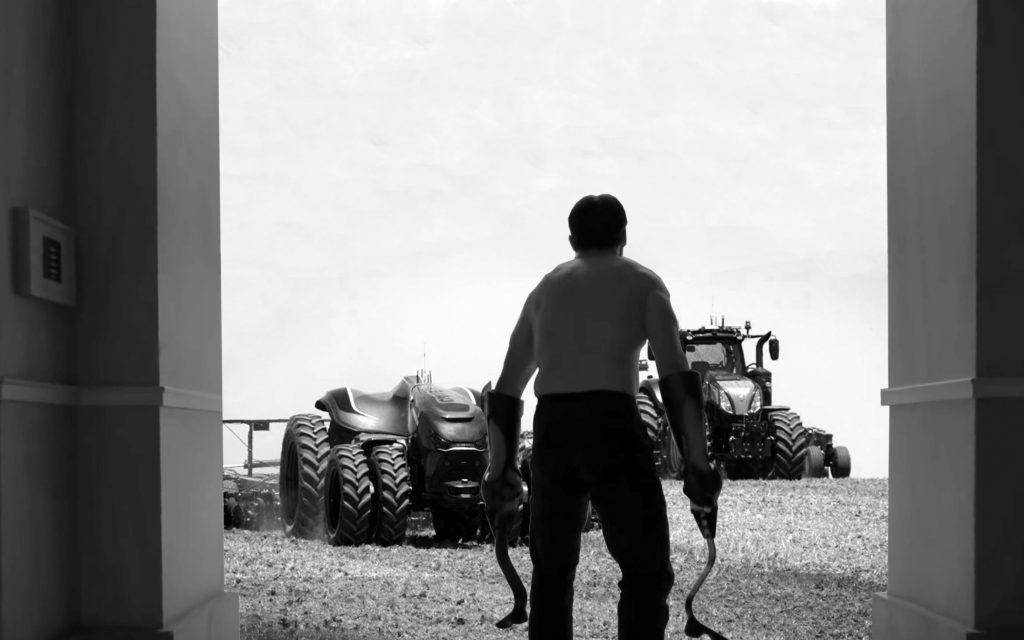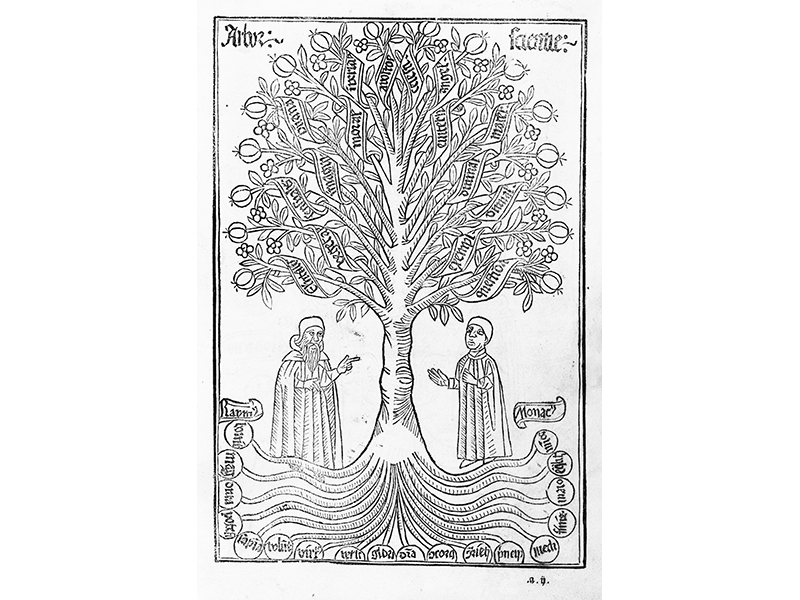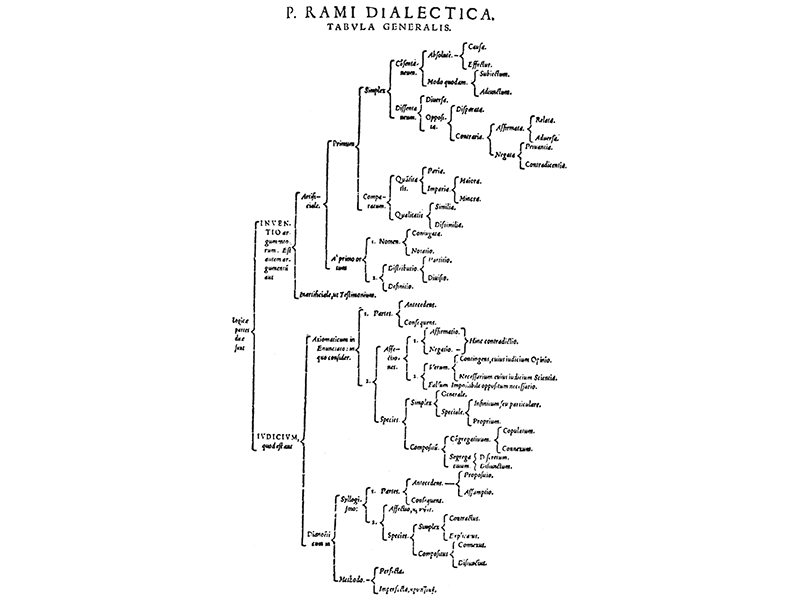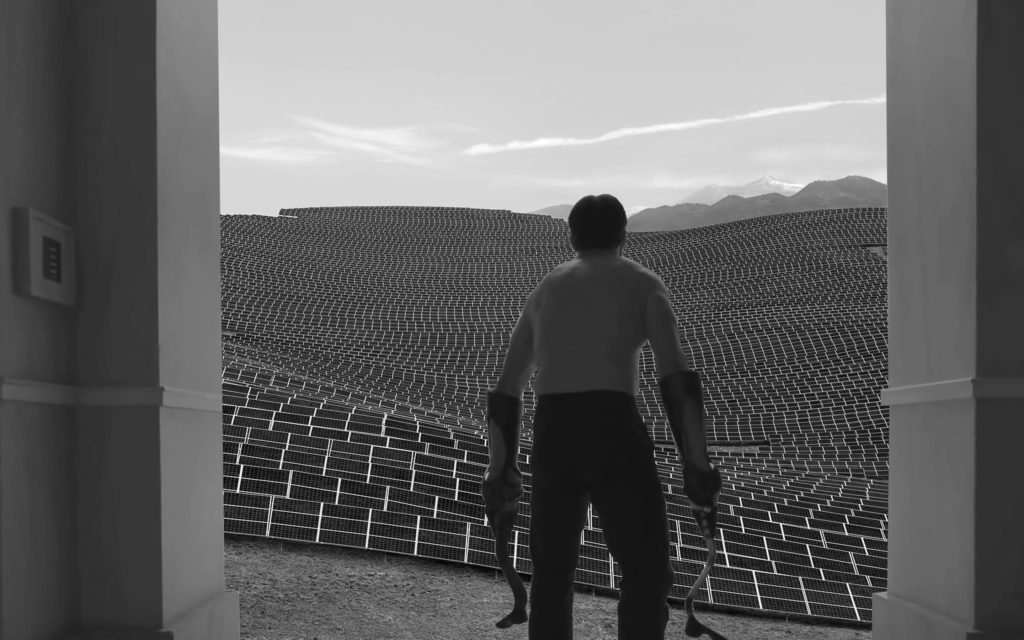
The Project of Disappearance: Notes on the Modern Trajectory
Marco Zelli
The reality of the film operator is fragmented and its parts are composed according to a new law. Precisely on the basis of his intense penetration by the equipment, it offers him that equipment-free aspect that he can legitimately demand from the work of art. Walter Benjamin “Das Kunstwerk im Zeitalter seiner technischen Reproduzierbarkeit” Introduction This text aims to dissect […]
The reality of the film operator is fragmented and its parts are composed according to a new law. Precisely on the basis of his intense penetration by the equipment, it offers him that equipment-free aspect that he can legitimately demand from the work of art.
Walter Benjamin “Das Kunstwerk im Zeitalter seiner technischen Reproduzierbarkeit”
Introduction
This text aims to dissect the untold project of the modern, namely the disappearance of the human as author as the true accomplishment of what Andrea Branzi calls “promised land of the humane”. It puts forth the hypothesis according to which the very subject of modern tradition is not architecture as such but the design of an architectural intelligence. This radical idea implies that the main drive of western culture coincides with its own overcoming, through the resolution of the dialectic between subject and system. An obsessive search for order appears throughout western architecture history under different names: geometry, proportions (Alberti) , procedure (Durand), prescriptions (Neufert), and active forms (K.Easterling), all these terms express an attempt to reduce the number of potential choices implied in the very act of design. The latter seems in turn to oscillate between a wish to make something that depends on human decisions and a wish to make something “free” from decisions. Alienation is therefore not merely a collateral effect of technological advancement but its very promise: the separation of making from the realm of responsibility and the return to a pre-technological condition by means of technological autonomy. The text will argue, through the analysis of some pivotal figures and entities how modern design insists on- and progressively achieves a self-regulating intelligence. All this with the final goal of realizing the highest possible form of mimesis (nature imitation). The construction of a second nature (Natura, lit.”things to be born”) entangles in fact the development of a device which is at one time automatic and unpredictable. I will scrutinize the work of these figures in order to isolate the trajectory of the modern script, from notational to computational intelligence and question the implication of this shift for architecture and design at broad.

Innocence I
Chapter I – Brunelleschi and Alberti: Scripting The Modern
The epistemological crisis of the Renaissance coincides with the appearance of a principle that is based precisely on the absence of stable truths: scientific thought.mManfredo Tafuri identifies in fact in “exactness” the main character of humanism, as a character derived from classical antiquity and the discovery of its structural rigor. Exactness invests the totality of humanistic fields, from the study of written sources to the study of artifacts (in both cases philology), with a consequent need for systematization of knowledge and its operative translation. More than a rediscovery of the centrality of man, humanism is therefore characterized by the flourishing of a typically human trait, reason, that, however, does not have man as its main focus. It rests on itself, being a general principle indifferent to the subject of its operation. In other words, it generates order. In the first chapter of his book “Theory and History of Architecture” Tafuri points out the dialectic between Brunelleschi and Alberti exploring a hypothetical point 0 of the Modern tradition and the contradictions embedded in it. Filippo Brunelleschi isolates a rational matrix of architectural making, as a static and supra-historical component, while Leon Battista Alberti acknowledges in the accumulation of languages the impossibility of interpreting history as a linear narration. The following centuries will be nothing but an intense dialectic between a Brunelleschian and an Albertian approach, between reason and historical matter, a research for timelessness on one side and the engagement with the magmatic substance of history on the other . While admitting the legitimacy of this reading, it is interesting to note how both approaches lead to a substantial exit from history, an “Eschaton”, following the instance of rationalization of the Renaissance. Besides an organic theoretical formulation of the new architecture and a philological study of the classical language, Alberti’s fundamental contribution concerns the modes of production of the architectural object. In his book “The alphabet and the algorithm” Mario Carpo describes Alberti’s “allographic” revolution as the decisive and definitive moment of affirmation of drawing as the form of architectural notation that structures the production process. Orthogonal projections were already known in the Hellenistic period, but Alberti’s use of them is new: the drawing became the exclusive place for the elaboration of the project and the only support on which all the information describing the building was condensed. The construction was then reduced to a mere execution of the design. The separation between conception and execution is radical. The managerial aspect of both replaces the integral experience of architecture. The discovery of the essentially parametric nature of the classical language and the exactness of orthogonal projections minimize any question of interpretation. the space for interpretation is virtually reduced to zero. The idea of notation of the architectural idea implies in itself an idea of reproducibility, therefore of transcendence of the specific-individual datum in favor of its own autonomy. This new dynamic explains how the Renaissance language can be read as a sort of “ante litteram” International Style. The spread of architectural notation – i.e. the externalization of precise fragments of information – implies an internal organization of the discipline and the formulation of a theoretical superstructure, a collective intelligence capable of branching and articulating autonomously, transcending the individual and his control. If in Alberti the character of rationalization of the classical repertoire and the modes of production anticipate the characters of modernity, it is Brunelleschi who isolates the most radical character of the avant-garde. His architectures are born from the need of a rapid re-foundation of vast urban portions in Florence of the fifteenth century.
The wish for optimizing the planning and the productive system required an extremely pragmatic attitude. As a consequence, the essence of his projects consists in a stark denial of the specificity of the historical substance through a super-imposition of another language, rational, therefore timeless. Brunelleschi’s organisms based on square- (the basilica of the Holy Spirit) or cubic- (the Hospital of the Innocents) modules respond to a desire to reduce the compositional logic to the minimum possible number of parameters. The most elementary logical (geometric) construct is chosen for its ability to be freely articulated in space, allowing, for example, the continuity of nave and transept within the same principle, or to equally articulate internal and external space, virtually projecting a perspective and isotropic space on the Florence of the time. Even the reuse of classical language is instrumental, not at all philological and obeys to a necessity of reduction. The use of historical lexicon is for him partial and clearly oriented to a reengineering of the additive pre-Renaissance urban space, following a logic that invested all scales of design, from the element to the urban space. The objects designed by Brunelleschi can be “mentally contained” insofar as they are the product of a purely rational operation. They represent an unprecedented form of compression of information determining space. They are a formal logical construct that is easy to reduce to a limited number of operations and therefore represent a major achievement in the “compression” trajectory of Western culture isolated from Carpo and more generally an optimization of the design process reducing the number of choices associated with the process itself. In these operations we can already see how the most radical hypothesis of the modern is an exit from history based on the primacy of ultra-temporal reason, the fulfillment of which perhaps coincides with the dissolution of Western intelligence itself.

Raymond Lull, Arbor Scientiae, 1295
Chapter II – Précis de Leçons, Jean Louis Durand – Mechanic of Composition
The enlightenment can be considered to a certain extent a step of further refinement of the process that started with the Renaissance; Rationality instead of humanism is here ultimately recognized as the truly human feature. Within this cultural frame Durand (1760-1834) emerges as a pivotal figure, shifting the interest of the discipline from design to design methodology. Prompted by his task, the formation at the École Polytechnique of a number of engineers devoted to the construction of the most pragmatic building, he theorized a mechanic of composition and dropped the base for a science of Architecture. His “Precis de Leçons d’architecture données à L’École Polythechnique” ” is structured according to an increasing degree of complexity “from the simple to the composed”: 1_Elements establishing a relation between architecture elements and their material cause. 2_Composition in General showing elements combination combined and assembled to create part of buildings. 3_Procedure to be Followed in the Composition of any Project showing through different degrees of abstraction how it is possible to structure an ensemble. The students are called to familiarize themselves with the composition process through an analytical survey of the part to whole relations at different scales.The sequence could be then inverted if one wants to execute the composition “procedure”. Composing requires a synthetical approach proceeding from the ensemble to the parts and finally the details. The treatise of Durand results therefore in a manyfold device capable of being oriented toward an analytic or a synthetic approach depending on the order of its components. The dissection of traditional architecture categories is thoroughly carried and restructured in a sort of progressive tree-like figure, logically organizing the composition process, according to a formal strategy reminiscent of the rhetoric construction of Ramon Lull’s Tree of Science in the 13th century. Not a specific content but a structure is what reason has to offer, a dynamic principle that will endure the entire season of the modern. The design process coincided then with the reckon of the forces at stake and starting from a given program and budget, could almost automatically be translated into a project accommodating the required needs. The frontal attack to the Vitruvian Triad “construction, distribution, decoration” reoriented the whole system toward a more laconic “utility”. In 1802 Durand writes in his “Précis” “that if instead of devoting one’s time to the production of designs – one was to first look at the principles of the art and then familiarize oneself with the mechanism of composition, it would be possible to execute with facility, and even success, the design of any building whatever, even without having previously done any other”. Such a statement is a quintessential expression of the modern and represents the most radical attempt to reduce architecture to a set of rules. The design of a system has been isolated as the main subject of architecture. According to Durand the architect as a designer is no longer necessary and architecture dissolves itself within “Reason” as collective intelligence. The project is not conceived but mechanically executed. His provoking statement claims with unprecedented clarity the priority of systematic thinking over formal manipulation and opens the doors to a new undertaking to design, namely the scripting. This conceptual approach tends to articulate the design process according to the modality of automatism, almost annihilating the space of decision. Architecture becomes “doing almost nothing”. The primacy of the syntactical aspect of design and the radical simplification of architecture vocabulary clearly connoted a linguistic understanding of the discipline where the construction of a grammar defines the very possibilities of architecture. The work started by Brunelleschi has been further optimized and just as in the renaissance it is relentless. Durand adds in fact a further module to his theoretical construct called “Examination of the Principal Genres of Edifices” where he extends the part-to-whole logic to the urban space. “Just as walls, columns and so on are the elements of which buildings are composed,buildings are the elements of which cities are composed”. Once again reason embraces the whole scale of design. In the book “recueil et parallèle des édifices de tout genre, ancien et moderne..” the eclipse of history by reason reaches its highest accomplishment: in this publication the most relevant architecture of the past are published in the same scale facilitating comparison and recombination, i.e comparison as a progressive tool for improvement. Paradoxically the operations of Brunelleschi and Alberti seem to reach a synthesis in the Theory of Durand. Rationality goes radical and even eclectic. The repertoire of history, flattened to a ultra historical ready made catalogue, gets systematized in order to be re-employed…Re- becomes a crucial prefix of the subsequent history.

Pierre de la Ramée, Dialectique, 1555
Chapter III – The Digital Eschaton
The formulation of languages endowed with a high intrinsic logic, (and therefore potentially autonomous) in the Renaissance and Durand’s syntactic research outlines a trajectory that expands throughout the entire span of western architectural culture. The synthesis of the metropolis to its programmatic section operated by Ludwig Hilberseimer for the Hochaussstad, the typological research of Mies, the “genetic” approach of Koolhaas, the kybernetes of Christopher Alexander are to be interpreted as recent expressions of a progressive reduction to a system of architecture making, that aims at replacing the manipulation of the architectural object with the construction of a process able to produce it, a grammar that defines its conditions of existence and frames its content. The flourishing of terms such as genetic (Foreing Office) , generative (Christopher Alexander) or even generic (OMA) in the architectural discourse of the XXth century attests to the maturation of this process, that still preserves the legibility of the mechanics of the design and, a compatibility with notational intelligence. The advent of Big Data technology has radicalized the tendency to the realization of autonomous devices, operating a shift from the conceptual to the operational level and opening the doors to an integral delegation of the design process to an artificial intelligence. While the attack on the author formulated by the super-structural rationale of the modern was based on the externalization of a self-organizing collective intelligence – substantially inhabiting the man, but transcending the individual – the one operated by Big Data addresses the very physiological basis of human intelligence. In spite of the rationalizing operations of the past, Big Data operates a subversion of the Platonic-Aristotelian construct that animated the modern and the western culture at large. Google’s “Search don’t sort” paradigm, as Carpo notices, replaces the notational structure of western intelligence with the sheer accumulation of retrievable experience. The logos replaces its sense of ordering principle with that of accumulation (see Heiddeger interpretation of Logos as “Leghéin” which means to accumulate, to preserve). The simple quantitative gap given by the computational capacity of the machine, i.e. its conjectural ability to formulate and verify myriad of hypothesis per time unit, has determined the obsolescence of the traditional figure of the designer and an atomization of the hierarchical structure in which production processes are traditionally organized. Precisely on the ground of this quantitative shift the product of the algorithmic intelligence becomes inscrutable. It would take ages for an organic intelligence, such as ours to reproduce and assess, hence comprehend, the number of operations leading the algorithm to its decision making. Machine design appears therefore as inexplicable as a natural phenomenon and as necessary as a physical one, not because of its intrinsically notational essence but because of a drastic shift in performances. Describing the distance between computational form-finding and modern engineering causal formulas Mario Carpo writes “Through computational form searching we can design structures of unimaginable complexity. But precisely because it is unimaginable the posthuman complexity belies interpretation and transcend the small data logic of causality and determinism we have invented over time to simplify nature and convert it into a reassuring, transparent, human friendly causal mode. Why does one so unimaginably complex structure work, and the thousand of very similar ones we just ran through FEA simulation do not? Who knows. But the point is that it works” The disconnection between the language of man and that of technology becomes for the same reason definitive. The Techno-Zeitgeist, that informed the grand narrative of the modern and perhaps its overcoming, seems to achieve in the Big Data the ultimate expression of its messianic essence: the exit of man not only from history but from his very existential condition (Ex-istere) by means of the construction of an artificial nature,where he is embedded again. Reason appears to have incubated an intelligence that transcends it. The modern dream to draw a total, synthesizing map organized by a system of intelligible associations undertaken by Warburg is overturned by the potential availability of the entire history of the phenomenal world as raw and unsorted material, i.e. the chaotic landscape of the machine data storage system. The caesura between the digital and the aesthetic implies the impossibility to read the mechanic of design (and generally of the phenomenal world production). It is only partially compensated by special interfaces that translate the otherwise intangible digital content, making it accessible to our physiology, albeit only as users. The generous dream of a responsive space, that Cedric Price envisioned at the scale of the Fun Palace, dissolved in the more capillary scale of design, and is evolving towards a progressive miniaturization and rarefaction in the digital. This dissolution of the visual makes our interpretative apparatus obsolete, our consciousness primitive again. The disappearance of the author within systems capable of autonomously organizing information represents for Carpo a return to a pre-Renaissance conditions, that of “Many hands-project”. The space of the project increasingly coincides with platforms simultaneously organizing information from several sources and configured according to a logic of participation and collective intelligence of a pre-modern kind. The parameterization of urban space inaugurated in the twentieth century realizes in “Deve software” (Sidewalk labs) its highest accomplishment. Here the author, delineated on the basis of a need for production optimization dissolves because of the same ethos. Its disappearance seems to be inscribed in its birth.

Innocence II
Conclusion?
While many architects are now asking how they could reposition themselves in the digital epoch, I wonder whether the digital is not the ultimate product of an architectural intelligence. Isn’t “architecture..once liberated from the obligation to construct the diagram of everything” as Rem Koolhaas says? The dissolution of architecture into design has been widely theorized, and it has been propelled by the very need for defending the project, negotiating the limits of the discipline. I can’t help but think of the question Alberti was obsessively posing as he realized the darkest secret of the modern. Quid tum? (What then?) What would it mean to embrace the scary perspective of the author’s annihilation? Which are the perspectives offered by the dismissal of human intelligence by its own artifice? Is this event going to suppress what we call human or is it just bringing the man to a further level? Does Posthuman architecture enshrine any possible interest for us, or is it just pure beauty? Which kind of preoccupation could possibly shape our approach to design when a “second nature” is going to provide us with all we need? How could we deal with this unprecedented degree of freedom (from choice)? Won’t art be necessary anymore or will indeed art be the only thing we need? What will art mean once the mimesis is accomplished? Which is going to be the focus of its criticism? Will art still serve to translate the raw matter of reality into human categories? What then.